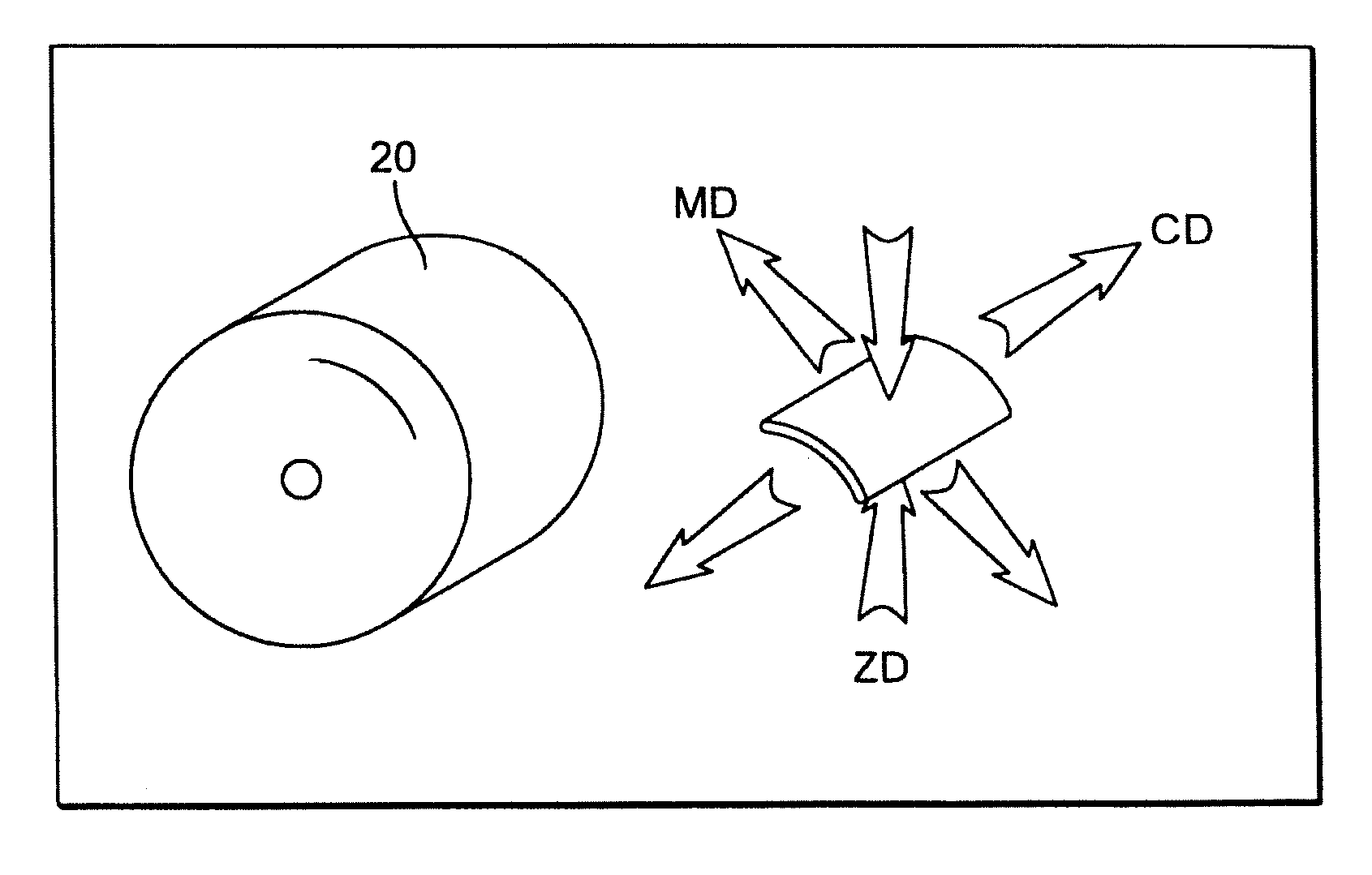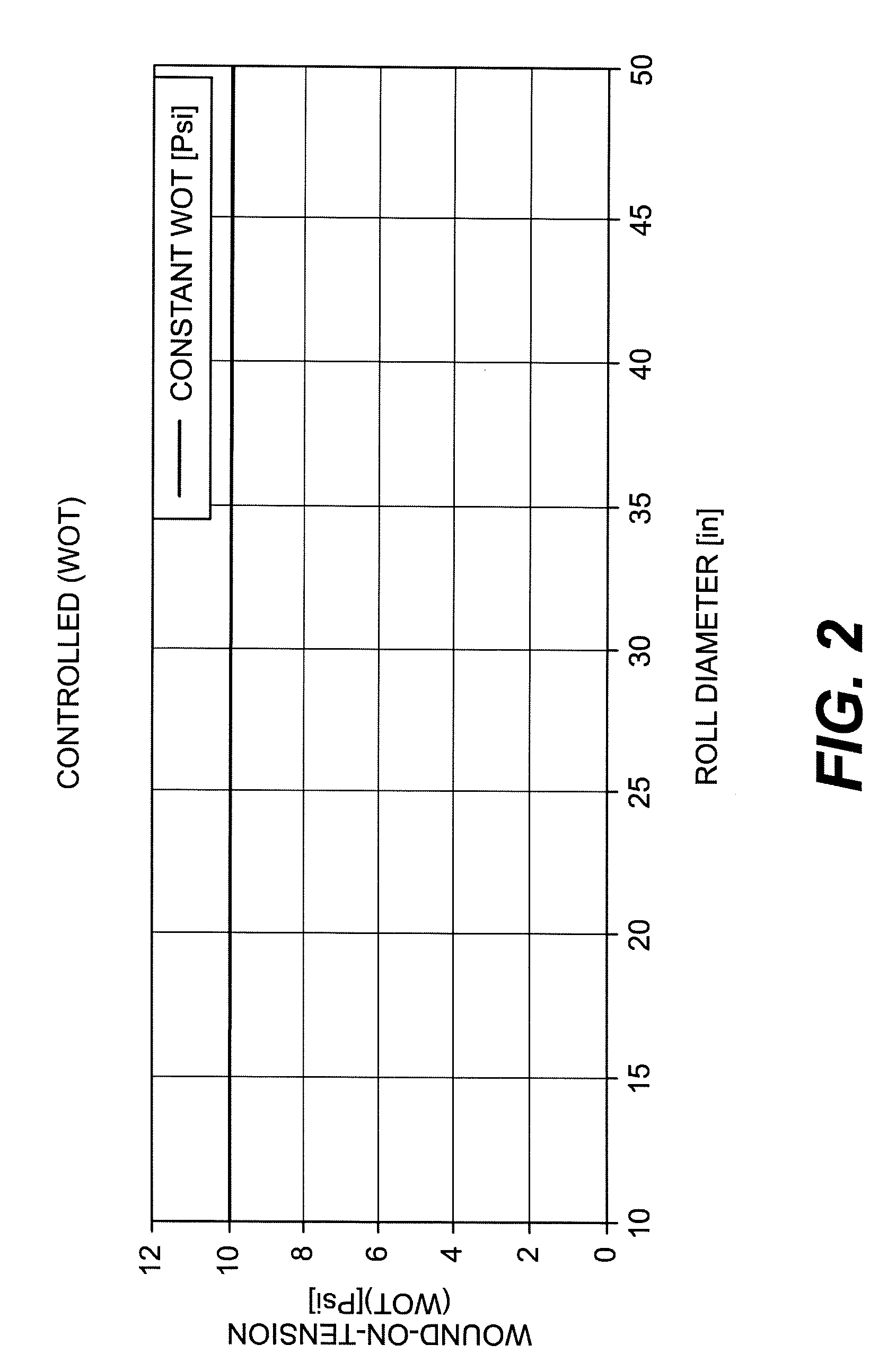Winding method for uniform properties
a technology of uniform properties and winding methods, applied in the direction of thin material processing, instruments, computing, etc., can solve the problems of significant non-uniformity and unique signatures that are not uniform, and achieve the effect of avoiding common characteristics and avoiding significant non-uniformities
- Summary
- Abstract
- Description
- Claims
- Application Information
AI Technical Summary
Benefits of technology
Problems solved by technology
Method used
Image
Examples
example one
[0052]For example, consider a material whose properties are listed below.
[0053]Web, wound roll properties:[0054]MD Modulus=25 Psi[0055]ZD Modulus→K1=0.1, K2=10 Psi (Pfeiffer's form—given in Hakiel's paper)[0056]Poisson's ratio=0.03[0057]Wound roll diameter=50 in[0058]Wound roll width=6 in[0059]Wound-on-tension=10 Psi
[0060]Core properties:[0061]Core inner diameter=9 in[0062]Core outer diameter=10 in[0063]Core modulus=100000 Psi[0064]Core Poisson's ratio=0.3
[0065]Consider a roll that has been wound at constant wound-on-tension (WOT) of 10 Psi for the web with properties listed above as shown in FIG. 2. The unique thru-roll stress profile for such a wound roll of this web material for radial stress is shown in FIG. 3, and the unique thru-roll stress profile for such a wound roll of this web material for MD stress is shown in FIG. 4. A modified version of Hakiel's model can be used to generate a winder computer program that computes the stresses and the results that are graphically pres...
PUM
 Login to View More
Login to View More Abstract
Description
Claims
Application Information
 Login to View More
Login to View More - R&D
- Intellectual Property
- Life Sciences
- Materials
- Tech Scout
- Unparalleled Data Quality
- Higher Quality Content
- 60% Fewer Hallucinations
Browse by: Latest US Patents, China's latest patents, Technical Efficacy Thesaurus, Application Domain, Technology Topic, Popular Technical Reports.
© 2025 PatSnap. All rights reserved.Legal|Privacy policy|Modern Slavery Act Transparency Statement|Sitemap|About US| Contact US: help@patsnap.com



